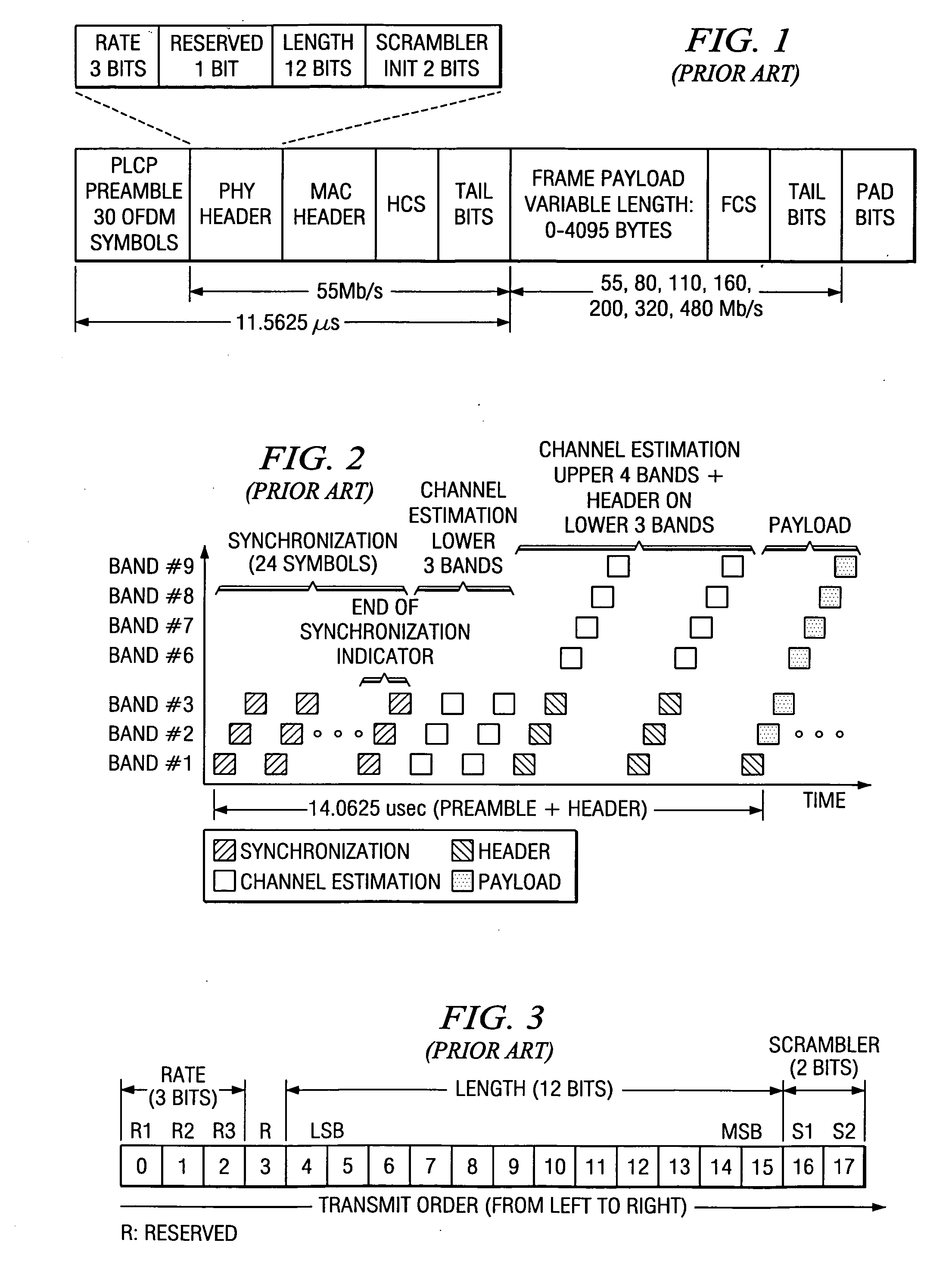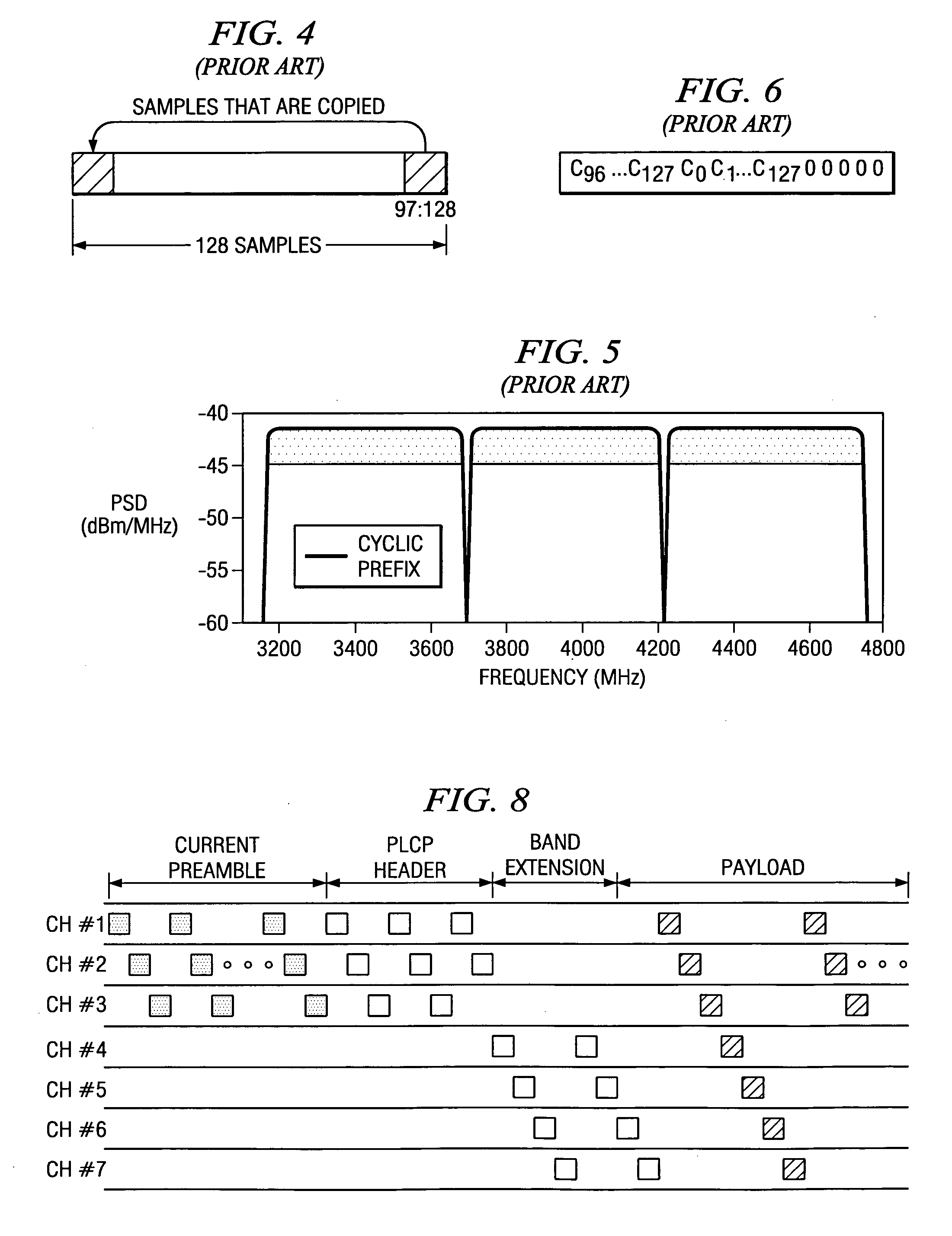Enhancement to the multi-band OFDM physical layer
- Summary
- Abstract
- Description
- Claims
- Application Information
AI Technical Summary
Benefits of technology
Problems solved by technology
Method used
Image
Examples
Embodiment Construction
[0038] New PLCP Frame Format
[0039] In view of the above drawbacks in the prior art PLCP Frame Format discussed in the background, it is desirable to keep the PLCP preamble and PLCP header the same in both the 3-band and 7-band modes, thereby simplifying the state machine in the receiver. Additionally, the information indicating if the packet is in the 3-band mode or the 7-band mode can be embedded in the PLCP header, thereby improving the decoding performance of this information and reducing the packet errors.
[0040] A first modification made to the PLCP frame format is to keep the PLCP preamble and the PLCP header the same for both the 3-band mode and the 7-band mode. The advantage is that this simplifies the state machine for the receiver and ensure backwards compatibility with legacy devices.
[0041] A second new teaching according to one embodiment of the present invention is adding an extension bits field for various extensions of the MB-OFDM physical layer. These extension bit...
PUM
 Login to View More
Login to View More Abstract
Description
Claims
Application Information
 Login to View More
Login to View More - R&D
- Intellectual Property
- Life Sciences
- Materials
- Tech Scout
- Unparalleled Data Quality
- Higher Quality Content
- 60% Fewer Hallucinations
Browse by: Latest US Patents, China's latest patents, Technical Efficacy Thesaurus, Application Domain, Technology Topic, Popular Technical Reports.
© 2025 PatSnap. All rights reserved.Legal|Privacy policy|Modern Slavery Act Transparency Statement|Sitemap|About US| Contact US: help@patsnap.com



